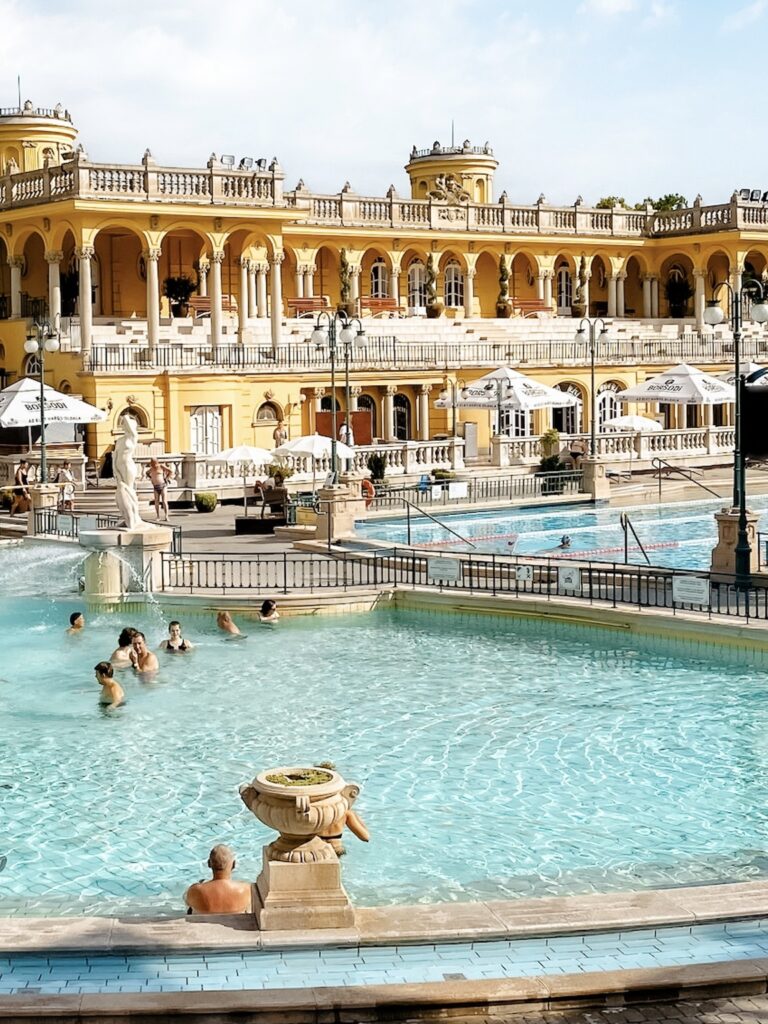
When most people think of Hungary, they think of Budapest.
This charming city has captured the hearts of many travelers who seek romantic getaways, history tours, weekend vacations, and nightlife adventures. Plus, the thermal baths are a must-visit! However, if you dig a little deeper, you’ll find that Hungary is home to many hidden gems waiting to be discovered.
Enjoy their rich culture and deep history, delicious food, beautiful scenery, and Christmas markets that will leave you feeling warm and fuzzy inside.
best time to visit
Hungary is lovely all year round, so choosing the best time to visit depends on your preference for the weather, crowd size, and budget.
Spring and fall are traditionally the best times to visit—the weather is beautiful, prices are lower, and you won’t have to compete with thousands of other travelers. Both seasons are a splendid time to visit spots like Budapest, Eger, and Tojak.
Summer in Hungary is not swelteringly hot, with average temperatures around 28-30 C (83-85 F). Because this is peak tourist season, you can expect higher prices, bigger crowds, and fully booked hotels.
Winter can be bitterly cold, and many attractions shut down, including accommodations in smaller towns. This is an excellent time if you’re trying to visit Hungary on a budget. Just be sure to bundle up (and make it worthwhile by visiting a Christmas market)!
know before you go
Currency: The official currency of Hungary is the Hungarian Forint (HUF). Many stores accept Euro as well.
Credit Cards: Credit cards are widely accepted throughout Hungary, especially Visa and MasterCard. You can also use Apple Pay. To save on fees, always select to pay in Hungarian Forint to avoid unnecessary exchange fees.
Small businesses may not accept cards or may have a minimum purchase requirement, so it’s wise to keep some cash on you during your visit. If you need to get some money out, you’re better off using ATMs owned by large banks, as they do not charge exorbitant fees or a high exchange rate.
Plugs: In Hungary, the plugs are type C and F, the standard voltage is 230V, and the expected frequency is 50 Hz. I recommend buying a universal adapter (make sure it has surge protection) and using a converter for hot tools.
Safety: Hungary is a highly safe country to visit. However, the large amount of tourists attracts thieves, and pickpocketing is common on public transportation and other spots visited by tourists. You should be fine as long as you stay vigilant.
Stay connected in Europe!
You’ll use a lot of data daily when traveling, whether navigating on Google Maps, posting to social media, using a translator app, or reading my blog 😉 To avoid excessive roaming charges or relying solely on Wi-Fi, consider getting an eSIM. My recommended option for staying connected in Hungary is AirAlo! I’ve been using it for years now. Their eSIMs are easy to install, reliable, and have incredible speeds. The best part? If you’re traveling to multiple countries within Europe, they also have a Europe eSIM.
TRAVEL GUIDES
bucket list experiences









